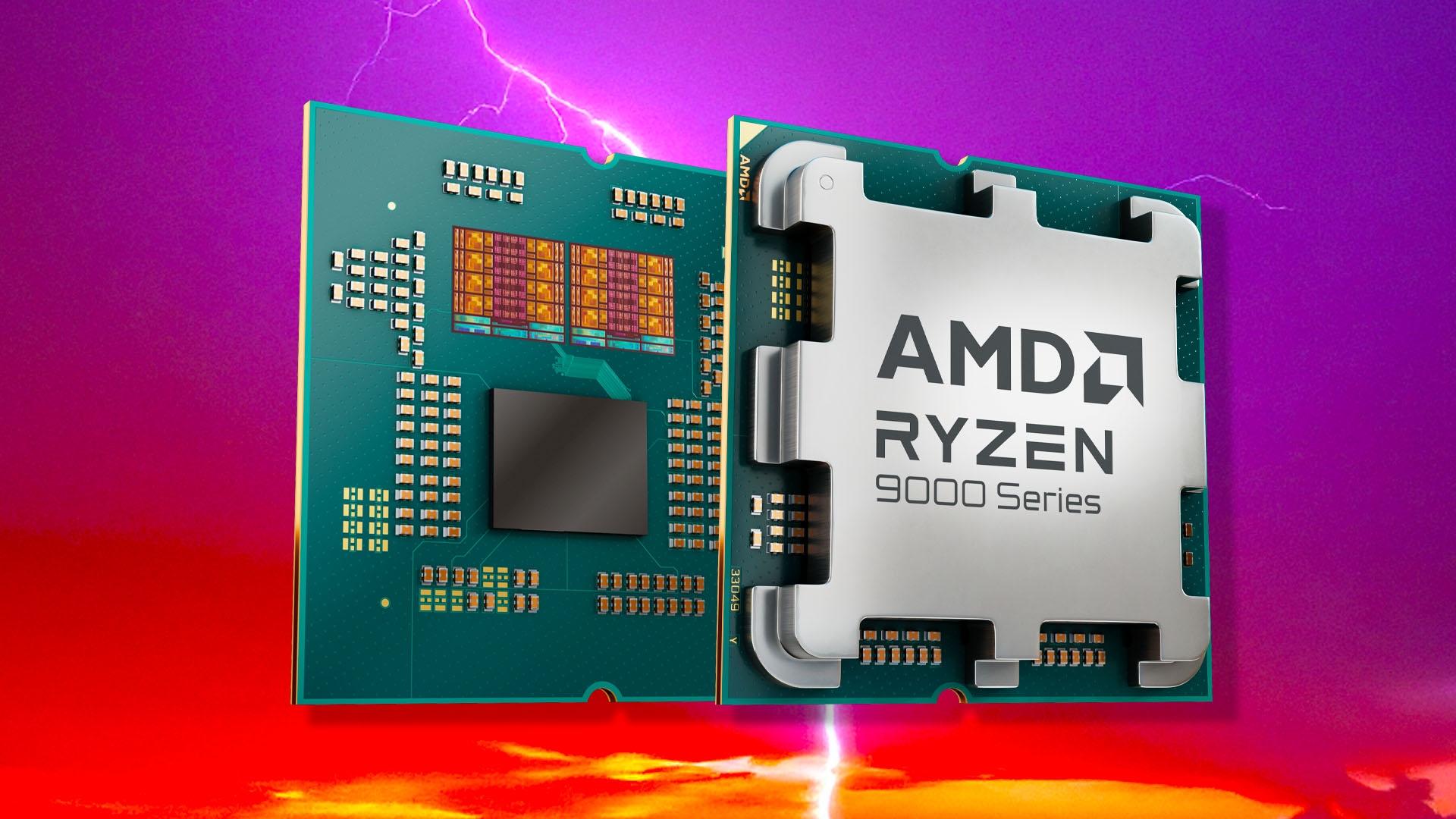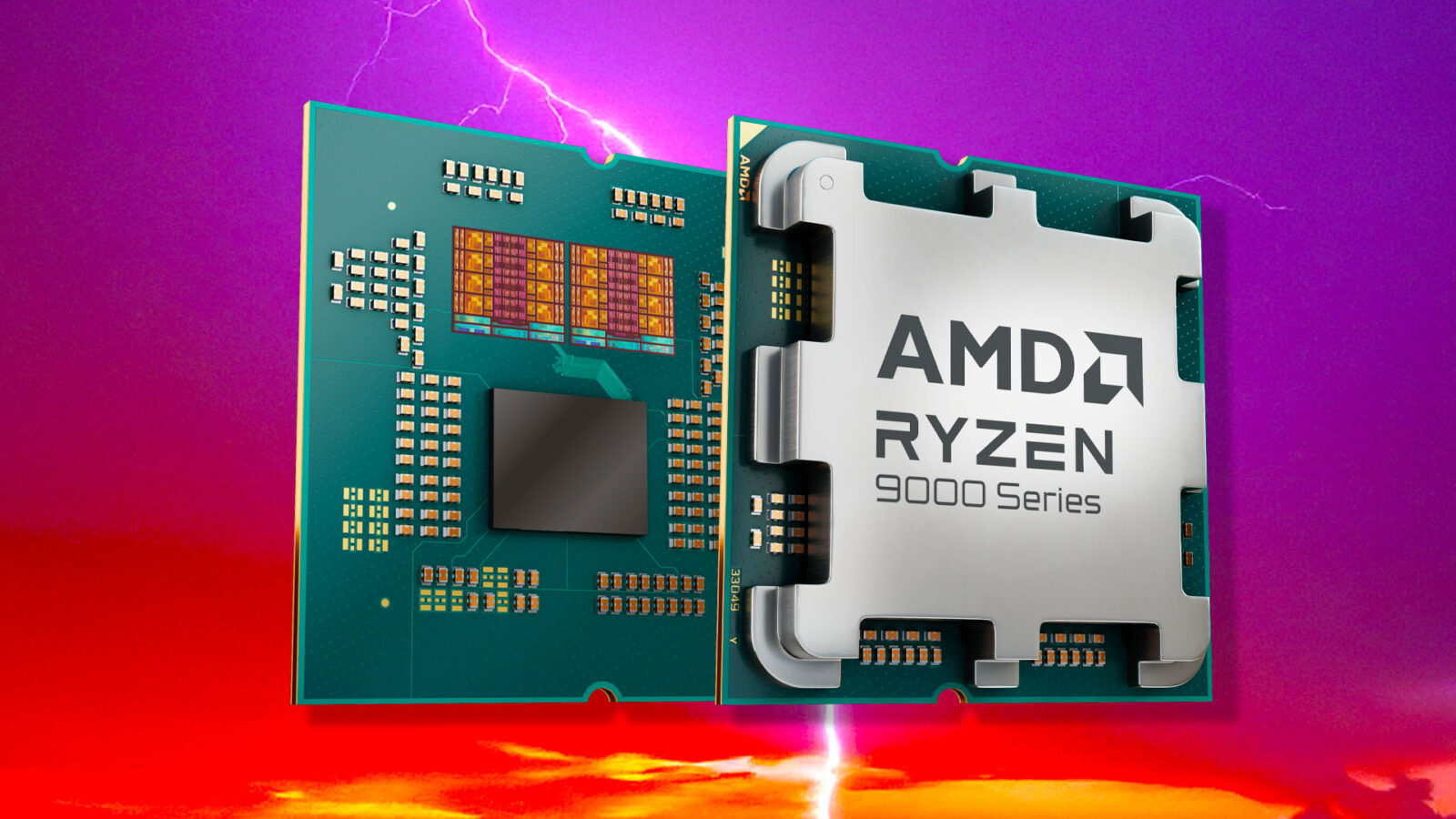
AMD has confirmed that it could make a limited-edition 16-core Ryzen X3D CPU with 3D V-cache on all 16 cores, and that it’s going to analyze whether it’s worth it, but that it thinks it will be a very niche product. I had the chance to catch up with AMD’s senior technical marketing manager of consumer processors, Donny Woligroski, at CES, where we discussed the potential pros and cons of a limited edition AMD Ryzen 9 9950X3D with 3D V-cache on both CCDs.
AMD announced the new Ryzen 9 9950X3D at the tradeshow, coming a couple of months after we wrote our Ryzen 7 9800X3D review, promising not only massive multi-threaded performance, but also fast gaming performance thanks to its 3D V-cache. However, the new chip still only has 3D V-cache for eight of the cores, while the other eight cores have no 3D V-cache underneath them, but they do have a higher clock speed to make the most of multi-threaded workloads, such as video encoding and 3D rendering. That’s arguably the best mix if you want a CPU that can do everything, but could there also be potential for an AMD 16-core X3D CPU where every core has immediate access to 3D V-cache?
“Everybody’s like, ‘Why don’t you make a limited edition?’ and to everybody, I say the same thing: If I handed you something and you saw an average 2% increase maybe, and I charged you an extra $100 bucks for it, $150, I don’t think that would be a positive review,” Wologroski tells me. “I think everybody would say ‘Why bother? Why would you buy this?’ It’s like a net loss. I think, ‘what are you doing AMD?’ is going to be the overwhelming response, so I’m scared to death of it.”
However, Woligroski then adds that “I’ve had enough people request that I’m going to put.. because sure we could do it. I think what I’d like to do is… I want to do some internal analysis, and internal analysis on what the price would be, and ask the press: ‘Look, how would you feel about this?’ We know it’s only going to be a couple of percent difference, maybe there’s a couple more cases where it’s not – we’d need to charge this much because it’s a limited run, limited edition thing, like, I don’t think there’s a massive market for it.”
That’s a long way from being a confirmation that AMD has a dual-CCD X3D chip waiting in the wings, but it certainly looks as though it’s possible, and that a limited-edition chip could be made if the company could establish there was a definite market for it. “I wouldn’t buy it,” admits Woligroski. “I wouldn’t recommend it, unless, you know – there’s not a lot of non-gaming corner cases that care about 3D V-cache, or that amount of cache, right?”
Ultimately, AMD thinks it’s got the balance about right with the new Ryzen 9 9950X3D. “It’s funny because everybody talks about this,” Woligroski tells me. “If you had tested a dual CCD with 3D V-cache, it would make almost no difference in benchmarks and would increase the price considerably. And when you’re running games, for the most part, we’re trying to squeeze everything onto one die anyway, you don’t really need more. If you have a game that needs more than 16 threads, which is pretty rare, in those cases the penalty isn’t really sizeable.”
There’s another question, though, which concerns the new Ryzen 9 9900X3D. This 12-core CPU not only has 3D V-cache on just one of its CCDs, but that CCD also only has six cores, meaning the cheaper Ryzen 7 9800X3D gives you more cores with 3D V-cache than the Ryzen 9 chip. Which one would AMD recommend for gamers?
“For gamers, I’d say go for the eight cores, every time,” says Donny. “If all you’re doing is gaming, I mean [for] anything in the Ryzen 9 series [we’re] assuming you have some creative work to do, assuming you have some multi-tasking, assuming you have multi-threading workloads. If you don’t have those, why would you buy a Ryzen 9 when it doesn’t make a lot of sense?
“Now I understand, from a consumer standpoint, this has got a higher number, so higher number better, right? But it’s up to gentlemen like yourself to explain that ‘Hey, a 9800X3D is all you need for gaming if that’s your focus. If you do more multi-threaded stuff, maybe a 9900X3D or 9950X3D is more attractive, but yeah, we’re not trying to pretend.”
Donny also claimed that, unlike their predecessors, the new Ryzen 9 CPUs will offer gaming performance that’s consistently on par with the 9800X3D, solving many of the latency issues that caused problems with chips such as the 7900X3D. “So we have a new part of the driver, there’s a new driver update,” he says, adding that AMD had been testing a number of games with the new driver compared to the old one.
“At the end of the curve, it’s about the same for both [drivers],” Donny tells me, “it’s just the bottoms of the curve, like we have the worst games on one side and the best, and the curve gets significantly better, and that’s why, from a gaming perspective, this is probably the first generation where, on average, it’s so close to the 9800X3D, like I don’t think from a gaming perspective you’d notice. There’s always one or two cases on each end – maybe one game really likes a lot of cores, maybe one game is very sensitive to not having more threads with the cache, but it’s getting pretty damn close.”
So there you have it. If your main focus is gaming, just buy the 9800X3D, if you can find it in stock. The new Ryzen 9 X3D chips are for those who want not only a good gaming CPU, but also a chip that can handle heavily multi-threaded workloads. Will we ever see a limited edition Ryzen X3D CPU with 3D V-cache on two CCDs? We’ll just have to wait and see.
In the meantime, check out our guide to the best gaming CPU if you want to see which processor best suits your needs now. Plus, if you’re planning to pick up the eight-core chip, read our guide on how to overclock the 9800X3D to see how you can get more megahertz out of it.












Leave a Reply